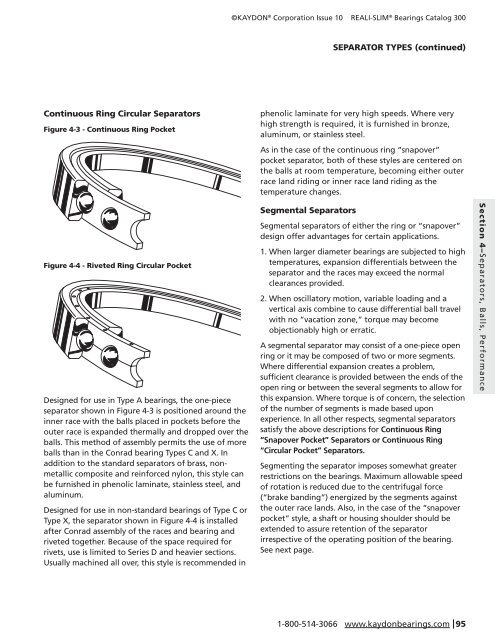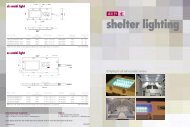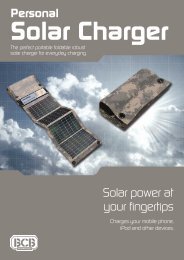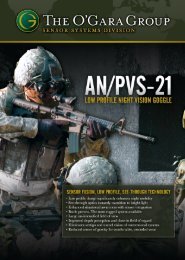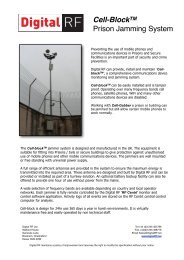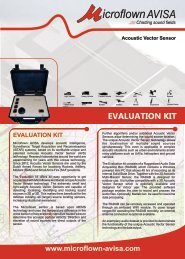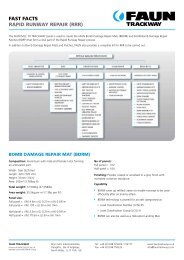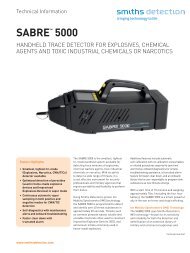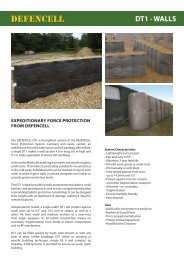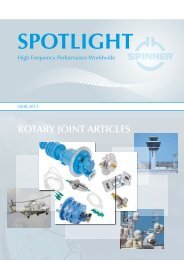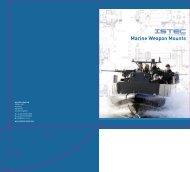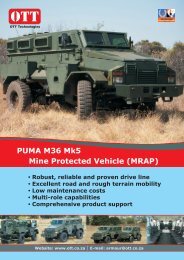Catalog 300 - Kaydon Bearings
Catalog 300 - Kaydon Bearings
Catalog 300 - Kaydon Bearings
You also want an ePaper? Increase the reach of your titles
YUMPU automatically turns print PDFs into web optimized ePapers that Google loves.
©KAYDON ® Corporation Issue 10 REALI-SLIM ® <strong>Bearings</strong> <strong>Catalog</strong> <strong>300</strong><br />
Separator Types (continued)<br />
Continuous Ring Circular Separators<br />
Figure 4-3 - Continuous Ring Pocket<br />
Figure 4-4 - Riveted Ring Circular Pocket<br />
Designed for use in Type A bearings, the one-piece<br />
separator shown in Figure 4-3 is positioned around the<br />
inner race with the balls placed in pockets before the<br />
outer race is expanded thermally and dropped over the<br />
balls. This method of assembly permits the use of more<br />
balls than in the Conrad bearing Types C and X. In<br />
addition to the standard separators of brass, nonmetallic<br />
composite and reinforced nylon, this style can<br />
be furnished in phenolic laminate, stainless steel, and<br />
aluminum.<br />
Designed for use in non-standard bearings of Type C or<br />
Type X, the separator shown in Figure 4-4 is installed<br />
after Conrad assembly of the races and bearing and<br />
riveted together. Because of the space required for<br />
rivets, use is limited to Series D and heavier sections.<br />
Usually machined all over, this style is recommended in<br />
phenolic laminate for very high speeds. Where very<br />
high strength is required, it is furnished in bronze,<br />
aluminum, or stainless steel.<br />
As in the case of the continuous ring “snapover”<br />
pocket separator, both of these styles are centered on<br />
the balls at room temperature, becoming either outer<br />
race land riding or inner race land riding as the<br />
temperature changes.<br />
Segmental Separators<br />
Segmental separators of either the ring or “snapover”<br />
design offer advantages for certain applications.<br />
1. When larger diameter bearings are subjected to high<br />
temperatures, expansion differentials between the<br />
separator and the races may exceed the normal<br />
clearances provided.<br />
2. When oscillatory motion, variable loading and a<br />
vertical axis combine to cause differential ball travel<br />
with no “vacation zone,” torque may become<br />
objectionably high or erratic.<br />
A segmental separator may consist of a one-piece open<br />
ring or it may be composed of two or more segments.<br />
Where differential expansion creates a problem,<br />
sufficient clearance is provided between the ends of the<br />
open ring or between the several segments to allow for<br />
this expansion. Where torque is of concern, the selection<br />
of the number of segments is made based upon<br />
experience. In all other respects, segmental separators<br />
satisfy the above descriptions for Continuous Ring<br />
“Snapover Pocket” Separators or Continuous Ring<br />
“Circular Pocket” Separators.<br />
Segmenting the separator imposes somewhat greater<br />
restrictions on the bearings. Maximum allowable speed<br />
of rotation is reduced due to the centrifugal force<br />
(“brake banding”) energized by the segments against<br />
the outer race lands. Also, in the case of the “snapover<br />
pocket” style, a shaft or housing shoulder should be<br />
extended to assure retention of the separator<br />
irrespective of the operating position of the bearing.<br />
See next page.<br />
Section 4–Separators, Balls, Performance<br />
1-800-514-3066 www.kaydonbearings.com |95


